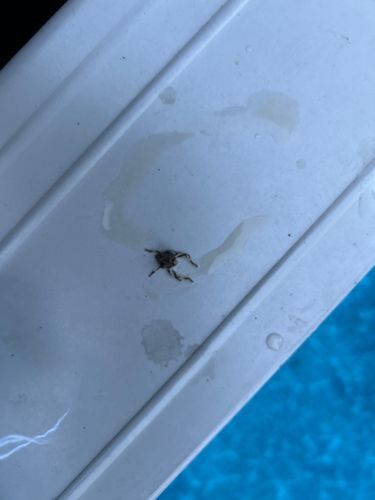Jumping Spider
Scientific Name: Family Salticidae (many genera and species)
Order & Family: Order: Araneae (Spiders), Family: Salticidae (Jumping Spiders)
Size: Most jumping spiders range from 1 to 25 mm (0.04 to 1 inch) in body length, with many common species being 5-15 mm.

Natural Habitat
Jumping spiders are found in a wide variety of habitats, including gardens, forests, grasslands, deserts, and even indoors. They prefer areas with good light and surfaces to perch and hunt from, such as walls, fences, and foliage. The spider in the image appears to be on a pool deck or similar structure near water.
Diet & Feeding
Jumping spiders are carnivores, primarily feeding on other insects and small invertebrates. They are generalist predators and will eat flies, mosquitoes, moths, beetles, and other spiders.
Behavior Patterns
Jumping spiders are known for their excellent vision and their hunting prowess. They do not build webs to catch prey but rather stalk and pounce on their victims. They use a silken dragline for safety, especially when jumping. They are active during the day and are often seen in sunny spots. Their courtship rituals can be elaborate, involving dances and visual displays.
Risks & Benefits
Potential Risks: Jumping spiders are generally not considered dangerous to humans. While they can bite, their venom is not medically significant to humans, and a bite typically results in minor localized pain, redness, or swelling, similar to a bee sting. They are not aggressive and will usually only bite if threatened or provoked. Potential Benefits: They are beneficial predators in ecosystems, helping to control populations of various insect pests. This makes them valuable in gardens and agricultural settings.
Identified on: 8/16/2025